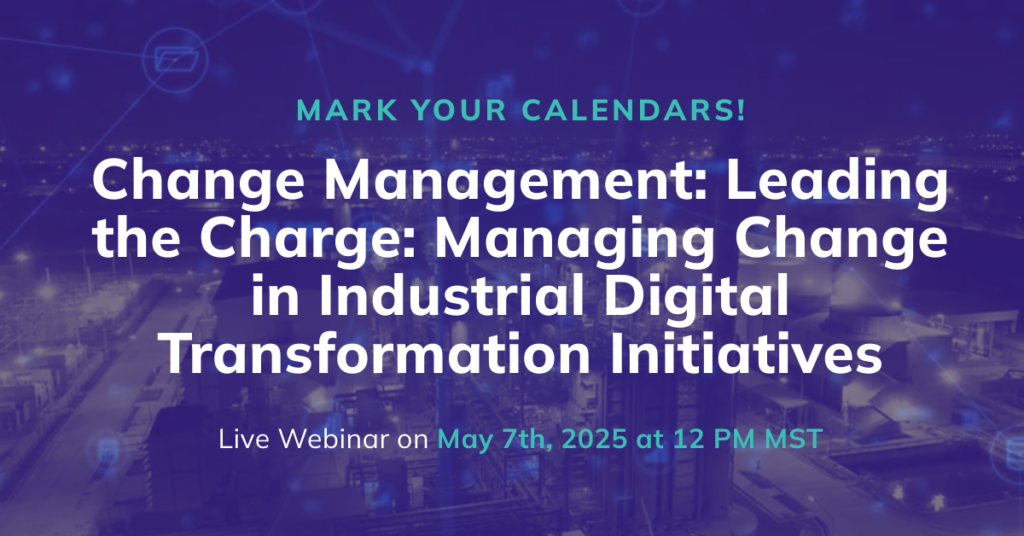Why 70% of Digital Transformations Fail—And How to Ensure Yours Succeeds
The Industrial Sector’s Digital Dilemma
Oil and gas, mining, energy, and pulp and paper operations are under immense pressure to optimize efficiency, reduce downtime, and integrate advanced technologies. Yet, despite massive investments in digital transformation, 70% of these initiatives fail.
Why? Because technology alone isn’t enough.
Industrial companies face a fundamental challenge: implementing digital tools is easy, but getting people to use them effectively is not. Failure to address the people side of transformation leads to underutilized systems, operational inefficiencies, and ultimately, wasted investment.
In this article, we’ll explore the three biggest reasons why industrial digital transformations fail—and the proven strategies to ensure your investment delivers real, lasting value.

1. Lack of Change Management Strategy
The Problem:
Executives assume that once a system is deployed, adoption will naturally follow. It doesn’t. Operators and engineers, accustomed to legacy processes, often resist new systems unless they see clear benefits. Without structured change management, digital investments become expensive shelfware.
Case in Point: The $50M System Nobody Used
A global energy firm invested $50M in an enterprise asset management (EAM) system. However, frontline workers continued logging data in Excel, refusing to adopt the new system. The reason? Leadership had failed to engage end-users early, provide proper training, and communicate how the system would make their jobs easier. The result? Millions in lost ROI and increased frustration across the workforce.
How to Avoid This:
- Implement structured change management frameworks like Prosci or ADKAR.
- Engage operators, engineers, and frontline workers before deployment, not after.
- Appoint internal champions to drive peer-to-peer adoption.
2. Leadership Misalignment
The Problem:
Leadership often assumes that approving a transformation project equates to supporting it. But without visible and active leadership involvement, transformations fail.
In many industrial organizations, leaders kick off projects and then disappear, leaving middle management and frontline teams to navigate the change alone. This creates misalignment, erodes trust, and results in poor adoption.
Case Study: Refinery Upgrade Failure
A major refinery implemented a real-time process monitoring system to improve efficiency. However, plant managers failed to consistently reinforce its use. Operators viewed the system as unnecessary oversight, and within months, the new technology was abandoned in favor of manual logs. The project collapsed due to leadership neglect.
How to Avoid This:
- Ensure executives are actively engaged throughout the change process.
- Make leadership visible champions of the transformation, not just project sponsors.
- Hold regular town halls and Q&A sessions to reinforce vision and purpose.
3. Change Fatigue & Employee Resistance
The Problem:
Industrial workers are constantly adapting to new systems, compliance regulations, and process updates. When change is poorly managed, employees disengage.
Studies show that companies experiencing frequent, unmanaged change suffer from higher turnover, lower productivity, and increased project failures.
Real-World Example: The Mining Automation Rollout
A global mining company introduced an automated dispatch system to optimize truck routing. However, operators, fearing job losses, sabotaged the system by inputting incorrect data. Leadership had failed to address employee concerns early, leading to costly delays and a system that never reached full adoption.
How to Avoid This:
- Communicate the ‘why’ early and often. Make it clear how digital transformation benefits employees, not just the bottom line.
- Identify resistance points and address them head-on through coaching and engagement.
- Invest in continuous training and support to ensure long-term adoption.

How Industrial Leaders Can Get It Right
Digital transformation success isn’t about the best technology—it’s about the best change strategy. To drive real results, organizations must:
- Treat change management as a priority, not an afterthought.
- Align leadership at all levels to drive transformation forward.
- Engage employees early and provide ongoing support.
- Measure adoption and adjust strategies based on real feedback.
The companies that succeed in digital transformation are those that invest in both technology and people.
Secure Your Competitive Advantage
Many industrial organizations fall into the same traps—poor adoption, failed projects, and wasted investments. Learn how to avoid these costly mistakes and ensure your transformation succeeds.
Join Dexcent and an expert panel of leaders from Enbridge, ProSci, and Plant.Digital as we break down the real strategies behind successful digital change.
Webinar: Change Management in Industrial Digital Transformation
May 7, 2025 | 12:00 PM MST
Register now to gain expert insights and avoid the pitfalls of digital transformation failure.

